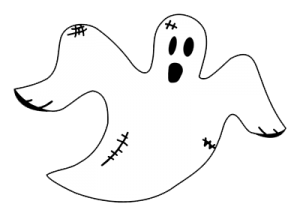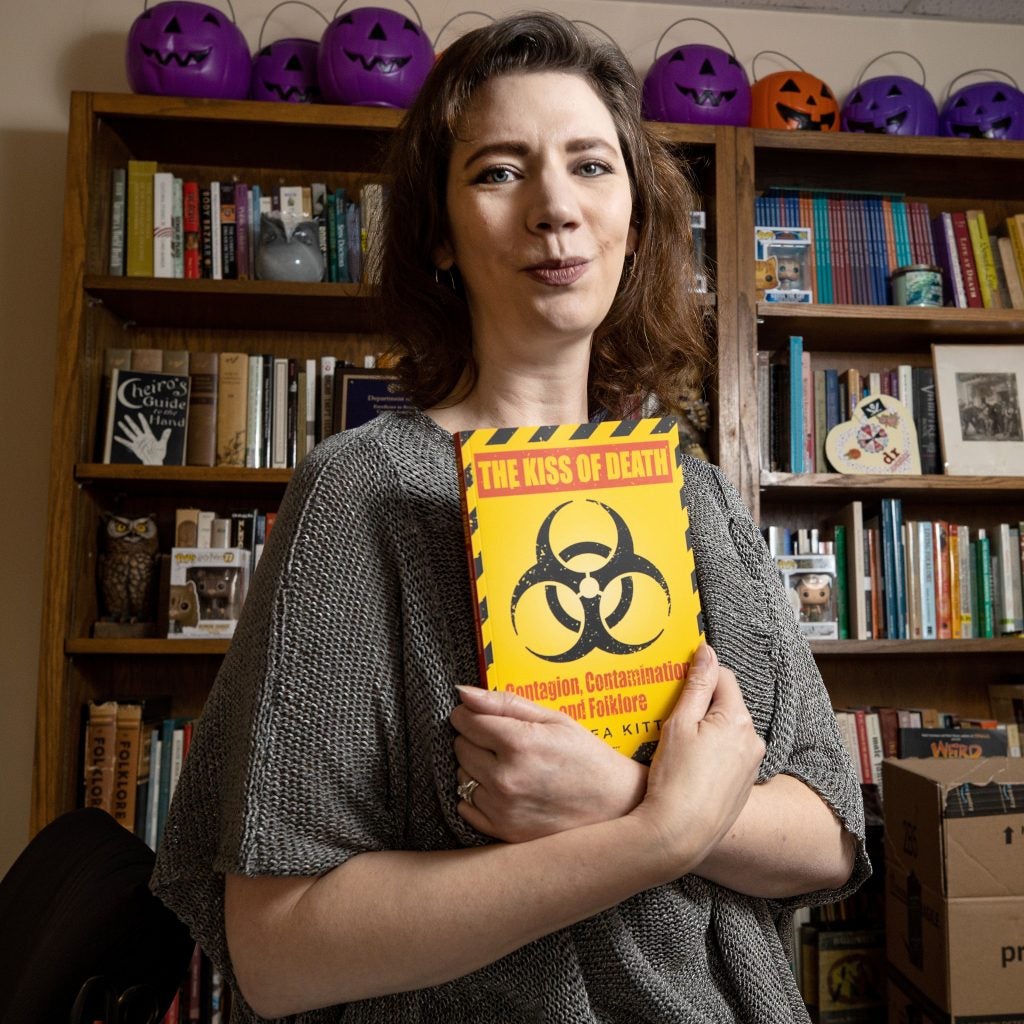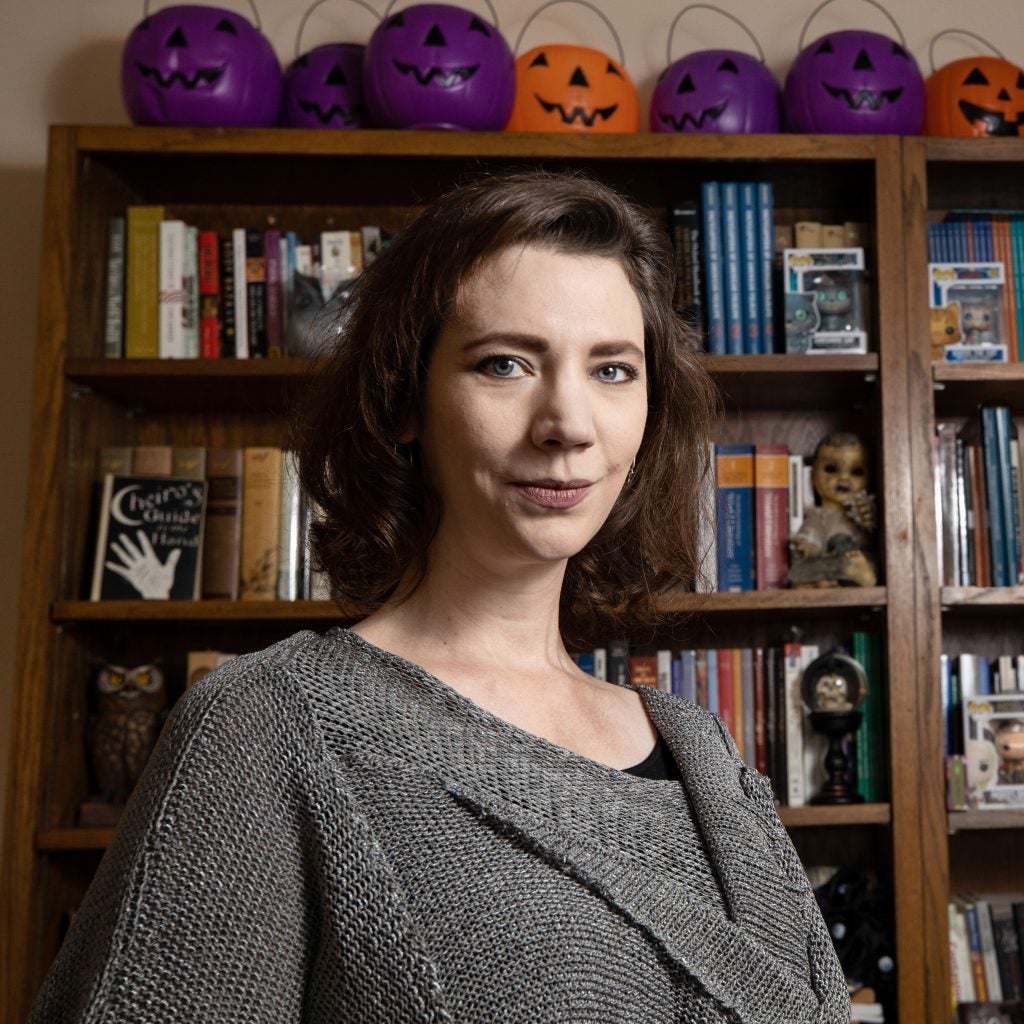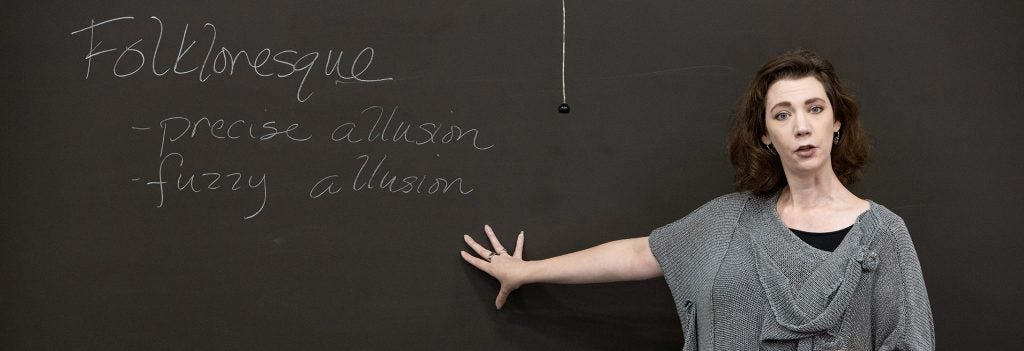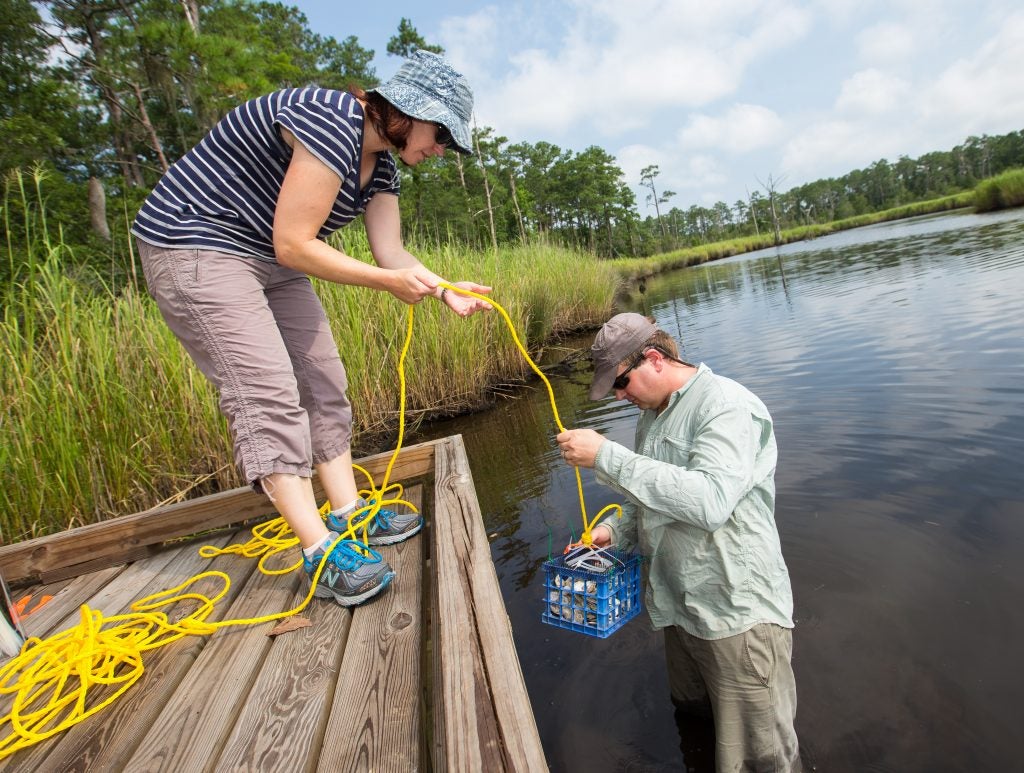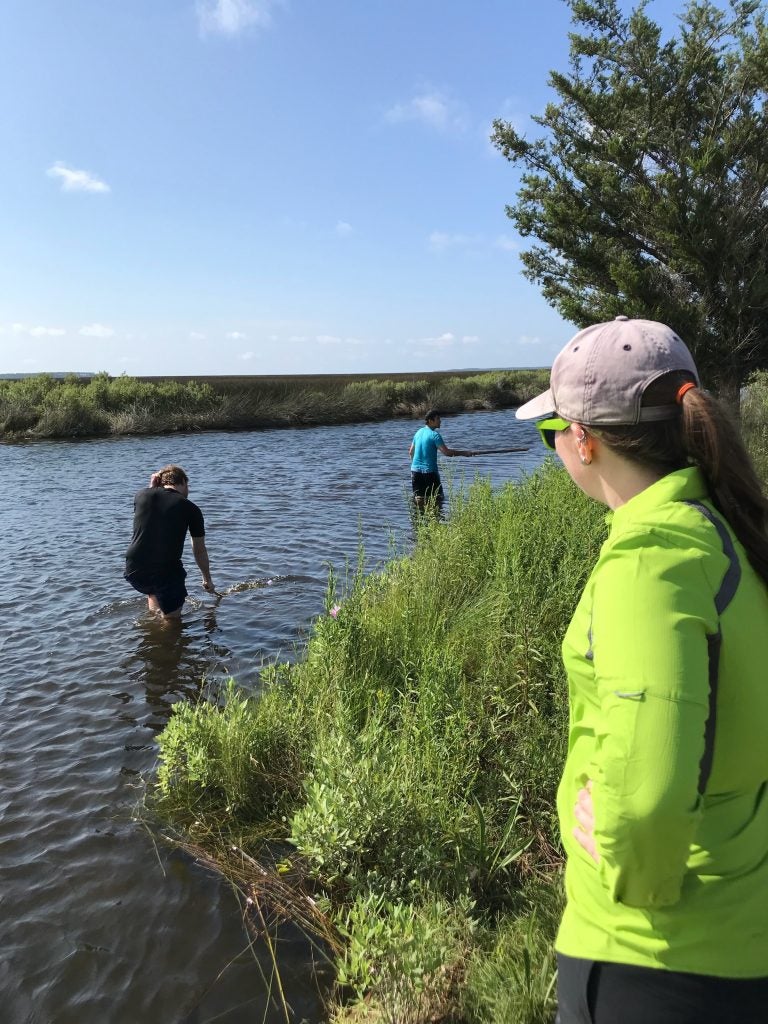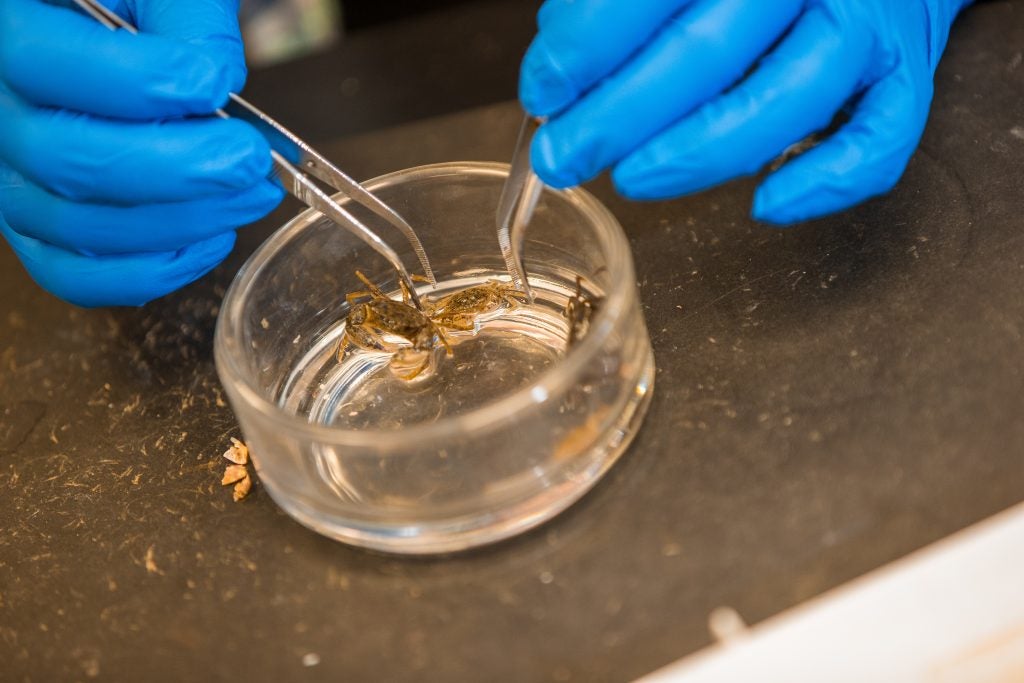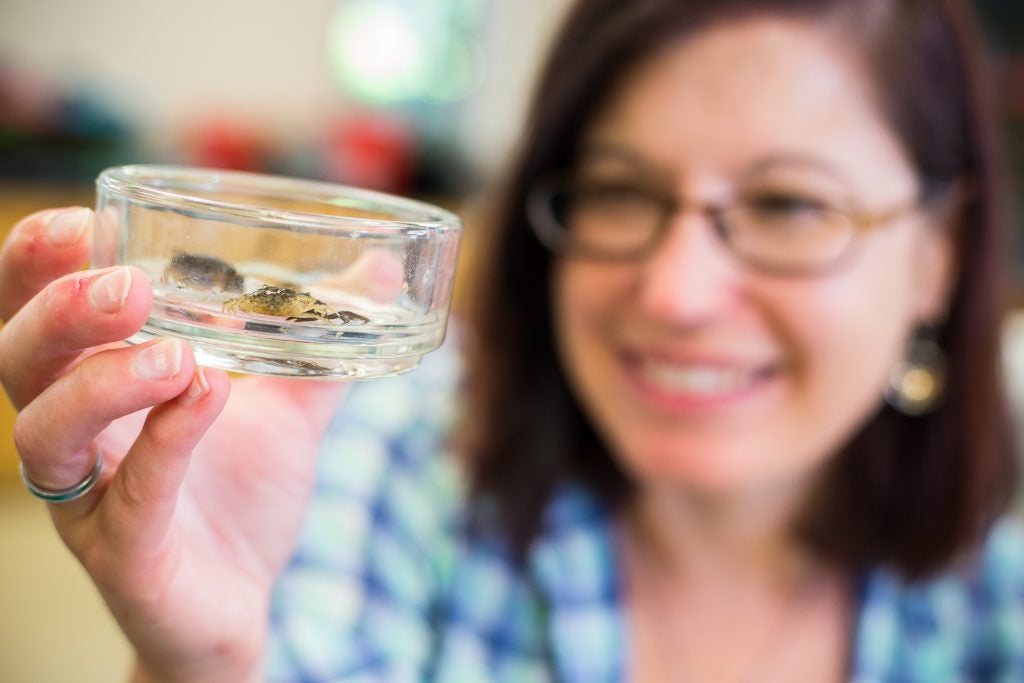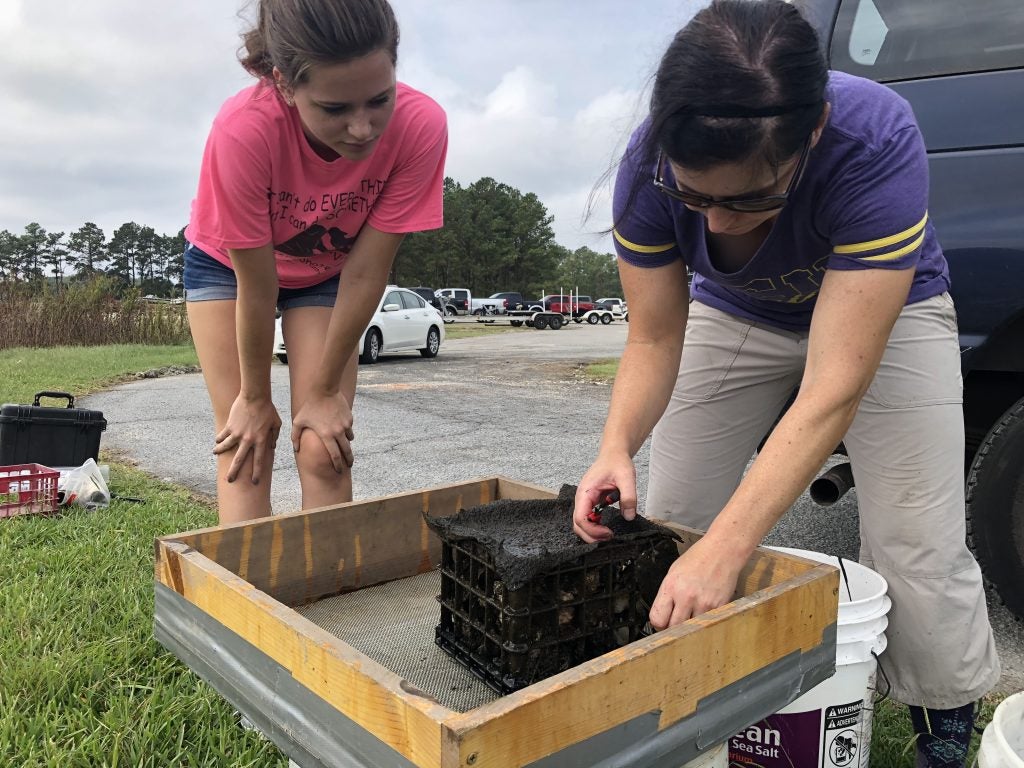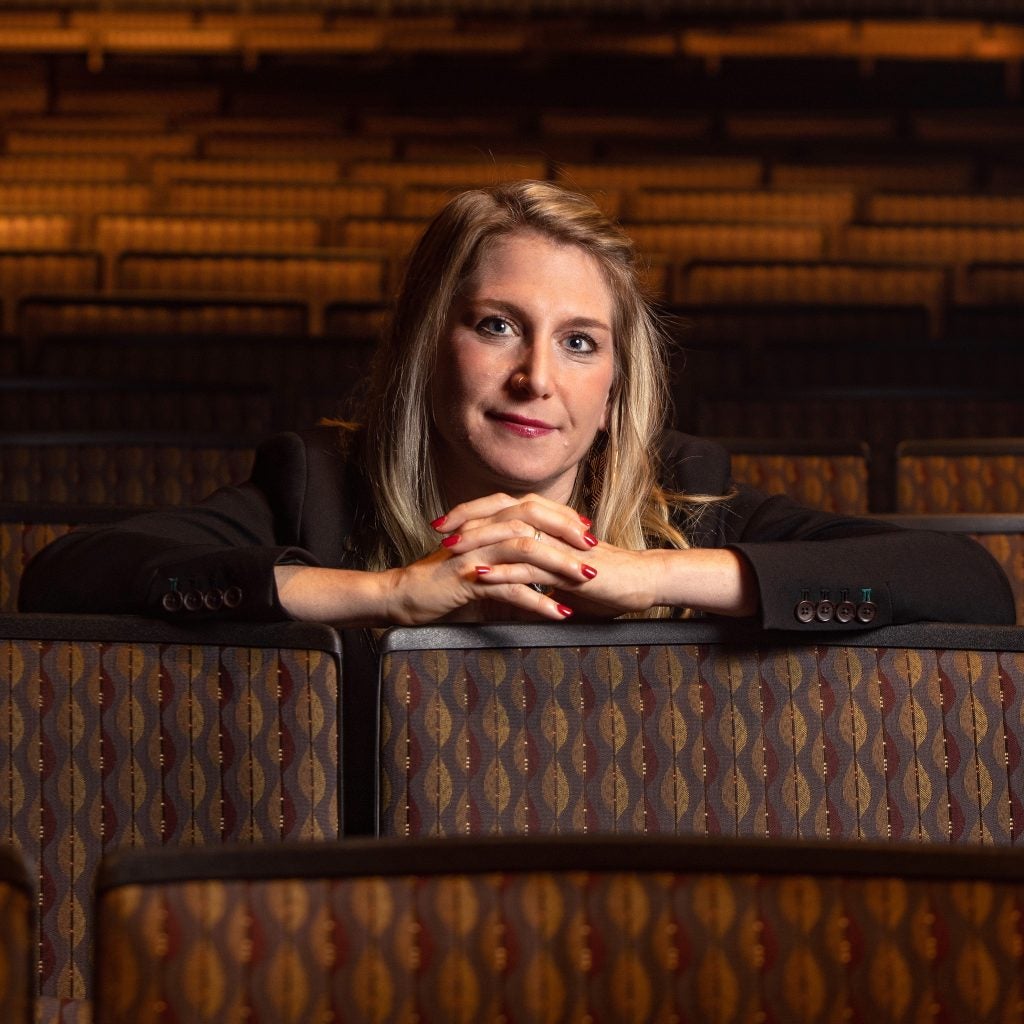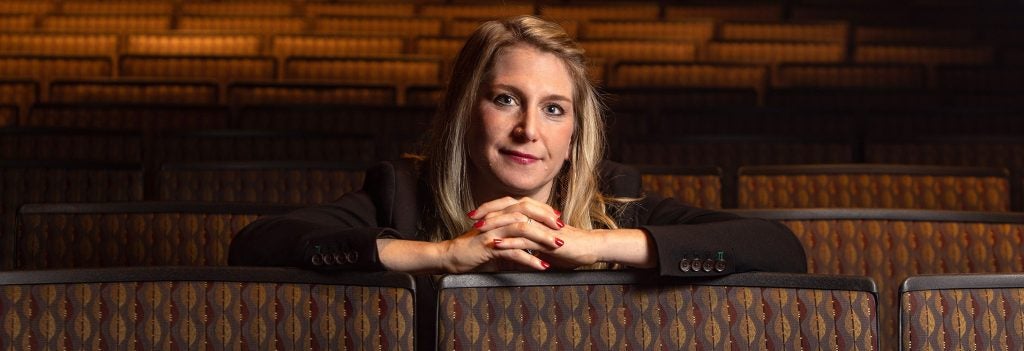GHOST STORIES, STRANGE HAPPENINGS AND ZOMBIE CRABS
ECU students, faculty explore folklore, supernatural narratives and parasitic barnacles
ECU is getting into the spooky season in advance of Halloween, with a ghost walk hosted by students in a supernatural class, the spreading of ECU folklore, horror movie picks courtesy of a film professor and an update on a zombie crab research project.
Contact: Jamie Smith or Jules Norwood, 252-328-6481, ECUNews@ecu.edu
SUPERNATURAL
Have you heard bumps in the night in buildings on East Carolina University’s campus? Maybe a door slamming mysteriously in Christenbury Gym. Cold brushes of air in Joyner Library. Children giggling late at night in Messick Theatre.
Like most university campuses, ECU has its share of ghost stories and strange happenings. But ECU also has one thing that many universities do not – a class that studies folklore and the supernatural.
The supernatural class (English 2570) is taught by Dr. Andrea Kitta, an associate professor in the English department who specializes in folklore. Her research interests include vaccines, pandemic illness and Slender Man. Her latest book, “Kiss of Death: Contagion, Contamination, and Folklore,” explores disease as a social issue, how legends and rumors spread fear and ways medical communities can use cultural literacy to effectively work with the public.
Download Video – Clean
Download Video – CC
Download instructions: Click above link(s), right-click on video when new page opens and click “Download Video as”
This is the third year Kitta has offered the class that studies how folklore plays a role in society. Spots in the class fill up quickly. She says her approach is not to talk about whether or not ghosts exist, but why belief in stories about the supernatural are important.
In the class, students look at why stories of the supernatural and folklore play such a large part in cultures across the world.
GHOST WALK
Curious about ECU-specific ghost stories and legends? Join Dr. Kitta’s Supernatural class for the ECU Ghost Walk.
ECU sophomore Laura Adams is one of 40 students in the class. She is an interior design major from Maryland and said she doesn’t believe in ghosts, but she does believe in other types of paranormal experiences or events.
“Mostly we’ve talked about folklore; what it means and what it actually is. It’s not just ghost stories, although that’s typically the common form we hear of it,” she said.
Adams said it’s hard to discount some experiences that have made it through different cultures over decades or centuries that can’t be explained, even with today’s knowledge and technology.
Kitta said approximately 40% of Americans believe in the supernatural, but she thinks that number is low because we are taught not to believe in things like ghosts, so people are hesitant to admit it.
“If the majority of Americans don’t believe in the supernatural,” Kitta said, “then why do we keep making movies and TV shows about it?”
As a class project, the students organize a ghost walk on ECU’s campus each year. They research folklore about ECU and Greenville and select five stories to include on the walk. They interview people with connections to the stories, advertise the event, plan the walk and participate as storytellers.
Kitta said three of the most popular stories that are almost always selected for the ghost walk involve Cotten Residence Hall, Joyner Library and Messick Theatre. READ MORE
Story Ideas – Supernatural – Photos available for download
ZOMBIE CRABS
A parasitic barnacle present in eastern North Carolina’s estuaries is highly damaging to its mud crab hosts — castrating them and replacing the crab’s reproductive system with its own, fooling the crab into protecting the parasite’s spawn.
“Once infected, the crab host becomes reproductively dead,” said Dr. April Blakeslee, assistant professor of biology at East Carolina University. “The parasite accomplishes this feat by invading the crab’s body as a series of roots that extends throughout the tissues of the crab, including its nerve center.”
The parasite’s takeover of the bodies and behavior of the still-living crabs led the team to dub the infected creatures “zombie crabs.”“This host-parasite system is truly a real-life case of ‘Invasion of the Body Snatchers,’” Blakeslee said. “In fact, invasion is a highly appropriate word here, not only because the parasite invades its host’s body, but also because the parasite (Loxothylacus panopaei) is an invasive species to Atlantic waters.
“The parasite likely first invaded the Chesapeake Bay with crabs associated with transplanted oysters from the Gulf of Mexico in the 1960s, continuing to spread along the Atlantic coast.”
Since July 2016, Blakeslee and students in her lab have monitored mud crab populations in the Pamlico and Neuse rivers, sampling sites every 6-8 weeks along a salinity gradient — saltier sites near the mouths of the rivers and less salty sites upstream.
Three years of data appear to support one of the team’s original hypotheses — that fresher water provides a refuge for the crabs from the parasite. Crabs from sites with average salinities less than 10 parts per thousand do not become infected, while sites with salinities greater than 10 parts per thousand have infection rates as high as 80%.
The research has also determined that when the rate of infection goes up, the abundance of the crabs goes down — likely because of the negative effect of the parasite on crab reproduction — and there’s a higher rate of predation by larger crab predators.
“Our work on this host-parasite system is furthering efforts to uncover potential impacts that the invasive parasite has on crab populations in the region, and how that may scale up from crab populations to estuarine communities,” Blakeslee said. “We will continue to sample North Carolina estuaries to collect more data on the parasite, its hosts and community interactions, particularly in the Pamlico estuary.”
Monitoring the impact of the parasite is important because of the mud crabs’ role in the food web.
“They are prey for things like blue crabs, lots of fish and birds. And in turn they eat tiny things within the oyster beds. Studies have shown that if you pull out these intermediate species, the whole system can fall apart,” Blakeslee said.
One of the sites where the team has deployed its “crab condos” — plastic crates filled with oyster shells that provide habitat for mud crabs but don’t trap them — is the North Carolina Estuarium in Washington. In addition to letting the team use the site for its monitoring efforts, the estuarium partnered with Blakeslee and Kayla Clark of ECU’s School of Art and Design to develop an exhibit on biological invasions featuring the zombie crabs, which opened in 2017.
The zombie crab exhibit will be showcased at the N.C. Estuarium’s third annual “Estuscarium” event from 5-8 p.m. on Saturday, Oct. 26. The event is free and includes carnival games, face painting and interactive presentations. Costumes are encouraged but not required.
“It’s a fun event, and you can learn even more about North Carolina’s estuaries and how they can sometimes be home to the living dead!” Blakeslee said.
FEAR IN FILM
Since the earliest days of commercial cinema, filmmakers have produced movies intended to shock and terrify their audience — and viewers keep coming back for more. This Halloween season, Dr. Amanda Ann Klein, associate professor of film studies, took a seat in the eerily quiet and empty Hendrix Theatre to talk about the power of horror films and recommend her favorites.
Glancing over her shoulder at the shadows looming underneath the theater’s balcony, Klein explained that there are films aimed at scaring people that date to the 1890s. An 1895 film called “The Execution of Mary Stuart” was produced by Thomas Edison and depicts a woman getting her head chopped off in front of a crowd of onlookers.
Predating computer-generated imagery by almost a century, it makes use of stop-motion editing for its dramatic climax, considered the first use of special effects in film.
“There’s also a George Méliès film from 1896 called ‘The Haunted Castle,’” Klein said.
Running more than three minutes, the film is set in a castle and includes a bat that turns into a devil, as well as appearances by a skeleton and four ghosts, all of whom play tricks on and bewilder a pair of cavaliers.
Both of those early short films, utterly shocking for audiences of the time, can be found on YouTube.
“But then you really don’t start to see anything in terms of storytelling until 1910 — there’s an adaptation of ‘Frankenstein’ — and the genre doesn’t really catch on until the 1930s,” said Klein. “You start to see movies about Dracula, Frankenstein, the mummy — things like that.”
Universal, which wasn’t a major studio at the time, gambled on the genre in the years after the stock market crash.
Download Video – Clean
Download Video – CC
Download instructions: Click above link(s), right-click on video when new page opens and click “Download Video as”
“It was cheap to make horror movies; you don’t need big stars because the scariness is the star,” Klein said. “It turned out to be a very smart move for them, and they really became associated with those monster movies.”
So why do people turn out for movies they know are intended to terrify them? Fear, like other fundamental emotions, produces a chemical reaction in the body that can be satisfying.
“Horror films are an example of what can be called a body genre. That includes horror, pornography, comedy and melodrama,” Klein said. “They all force your body to have a reaction, whether it’s crying, laughing or fear. It’s very cathartic to feel that and have that bodily emotion.
“If you’ve ever watched a really good comedy, afterwards you feel a sense of release and satisfaction because you’ve laughed so hard. And horror movies can do the same thing for you. Horror is about that bodily sensation.”
DR. KLEIN’S TOP FIVE
“These are the five horror movies that have had the strongest impact on me, either by being very scary or by digging their way into my brain and not getting out.”
“Night of the Living Dead,” 1968, U.S.
“Texas Chainsaw Massacre,” 1974, U.S.
“The Descent,” 2005, U.K.
“The Host,” 2006, South Korea
“The Orphanage,” 2007, Spain
Her own favorites include a pair of classics — “Night of the Living Dead” and “The Texas Chainsaw Massacre” — and a trio of foreign films from the mid-2000s that tapped into a very specific and powerful emotion: the loss of a child.
“If you think about horror films (in terms of) your greatest fear and what’s going to tap into that, as a parent, especially watching those when my kids were really young, it activates that primal fear. So for me those movies really did it,” she said.
Klein, whose class on horror films will be offered again in the spring, said she enjoys introducing students to the history of this genre of cinema.
“A lot of them have never seen a black-and-white movie, and most of them have never seen a silent film,” she said.
The movies also provide a catalyst for deeper class discussions.
“We watched ‘Get Out’ and it gave us the ability to talk about race and the way white society tries to appropriate the aspects of black culture that they like and discard the rest,” she said. “I get to show them what else horror is doing besides scaring you or trying to gross you out.” READ MORE
